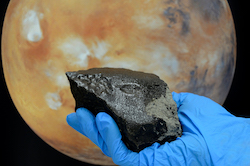The deep source of magnetic fields in planets and moons
The InDyMag (Internal Dynamics and Magnetic field generation in rocky bodies: planets and large moons in the solar system) project is aiming to unravel the mysteries of magnetic fields in rocky planets and moons. Undertaken with the support of the Marie Skłodowska-Curie Actions programme(opens in new window), it is helping to shine a new light on how these fields are generated, and how they may have evolved over time. To improve our understanding of these processes, the project team is confronting mathematical models with evidence of magnetic fields in the planets of the inner solar system.
Powering the Earth’s dynamo
All major rocky bodies in our solar system, including the four rocky planets and several moons have been shown to have generated magnetism at some point in their existence. As a major driving force of magnetic fields, the researchers focused on studying the crystallisation of planetary cores, which occurs when metallic elements such as iron cool below their freezing point. Due to pressure effects, this is expected to occur in most cores at the centre: in the case of the Earth, for instance, the result is an inner core of solid iron, covered by a fluid outer core of liquid iron. “Crystallisation of iron and other elements leaves the liquid core devoid of heavy elements, making it lighter than its surroundings and generating flows, similar to those of water in a heated pot. Because the outer core is mainly an electrically conducting fluid, the movements generate an electric field, and then a magnetic field. This mechanism is known as the geodynamo,” explains Benoit Langlais, director of Research at the Laboratory of Planetology and Geodynamics(opens in new window), a joint research unit of the CNRS(opens in new window), the University of Nantes(opens in new window) and the University of Angers(opens in new window), which hosts the project. The team found that the effects of crystallisation on dynamo generation may have been overestimated. “For small cores like the Moon’s, or cores freezing really fast, we may obtain fluffy cores – imagine a sponge filled by water,” says Marine Lasbleis(opens in new window), Marie Skłodowska-Curie fellow and InDyMag’s principal investigator. “This porous inner core may trap liquid, preventing it from being efficiently mixed with the liquid outer core.” While crystallisation is known to play an important role in generating the Earth’s current magnetic field, a key question that remains is what happened before its inner core started to crystallise. “Evidence of a magnetic field on Earth goes back to Archean times – billions of years before the estimated time of formation of the inner core,” Langlais notes. The InDyMag team is collaborating with researchers in France, Germany, the United Kingdom and the United States to gain deeper insights into these ancient dynamics.
Assessing habitability
The results of InDyMag could also inform future research exploring the link between the presence of a magnetic field and the emergence of habitable environments. “The existence of a magnetic field has been proposed as a way to assess habitability on a given planet,” Lasbleis says. The habitability of a celestial body depends on many different aspects, including for instance the temperature on the surface, the composition of the atmosphere and the presence of water, she adds. These are impacted both by external conditions, such as solar irradiance, and by internal dynamics, such as volcanism – which is in turn directly related to magnetism.







